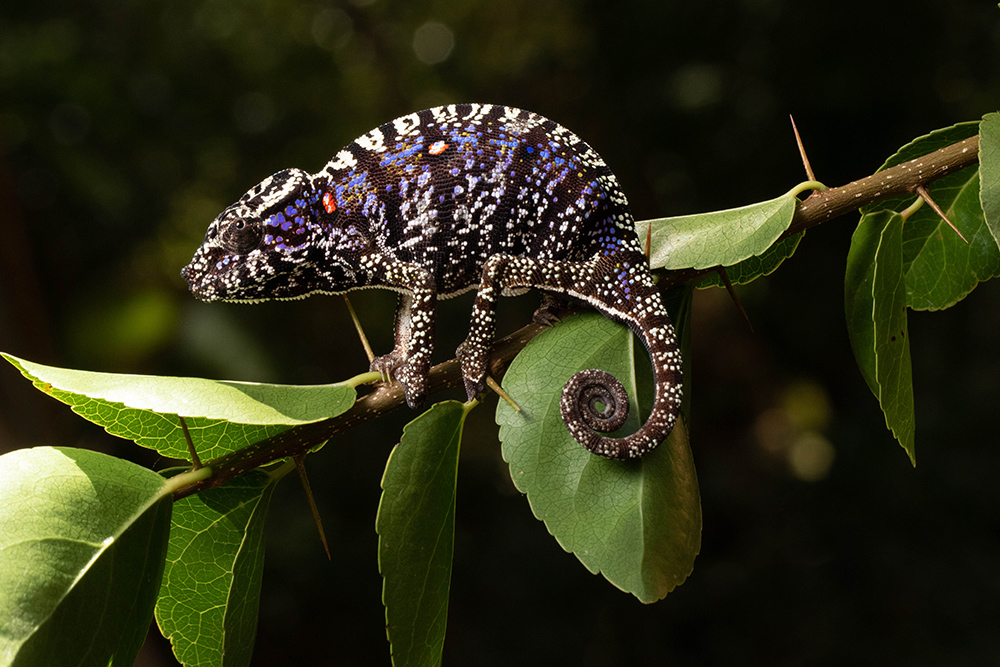Throughout history, there have always been species that have been described once and then never seen again. There are also such cases among chameleons. Only a few years ago, the chameleon Furcifer voeltzkowi, which was thought to have been lost for almost 100 years, was rediscovered in western Madagascar. A recent publication by a large number of international authors now deals with the question of which factors influence rediscovery.
In 2023, the IUCN published a list of over 2,000 vertebrate species that had not been seen for more than ten years. Re:wild also published a list of 1008 lost species. Based on these lists and other literature, the scientists searched for species that had not been seen in the wild for more than ten years. In addition, there could not be any ex-situ populations (care in human hands outside the original occurrence). The result was a list of 1280 vertebrate species, which was then finalised with specialists in the respective fields. For example, species that are now considered extinct were excluded. This left 856 lost species, 42% of which were reptiles. The collected data was statistically analysed based on various factors.
Fewer reptiles were represented in the rediscoveries than mammals. Fewer reptile species were rediscovered than would have been statistically probable by chance. Reptiles also die out significantly faster than species are rediscovered. Overall, however, the rediscovery rate for reptiles is on the rise. Most rediscoveries have taken place in the tropics. Brazil and Ecuador are by far the countries with the most discoveries, closely followed by Australia, India and Madagascar. Surprisingly, a higher threat of habitat loss resulted in a higher rediscovery rate for reptiles.
Overall, there are several possible reasons why lost species have not yet been rediscovered. Firstly, there is a lack of data for several species – Brookesia lambertoni, which has not been seen in Madagascar since 1921, is mentioned here as an example. In the original description, its area of discovery is given as “Fito”. Fito is Malagasy for the number seven. Unfortunately, it is still not known what is meant by this name. There are many villages with the name, but it could also have meant a region, a river or a forest. It is also possible that the original description of the origin is due to a linguistic misunderstanding and that “Fito” does not exist as a place at all.
Furthermore, a lack of research capacity, especially in developing countries, also means a lower search intensity for lost species. In addition, many reptile species are rather inconspicuous and small. As a result, they are more difficult to advertise and attract little or no attention from potential sponsors. In addition, the habitat can also play a part in a species not being rediscovered. This is the case, for example, with very remote habitats or landscapes that are difficult to access, such as swamps.
What factors influence the rediscovery of lost tetrapod species?
Tim Lindken, Christopher V. Anderson, Daniel Ariano-Sánchez, Goni Barki, Christina Biggs, Philip Bowles, Ramamoorthi Chaitanya, Drew T. Cronin, Sonja C. Jähnig, Jonathan M. Jeschke, Rosalind J. Kennerley, Thomas E. Lacher Jr., Jennifer A. Luedtke, Chunlong Liu, Barney Long, David Mallon, Gabriel M. Martin, Shai Meiri, Stesha A.. Pasachnik, Victor Hugo Reynoso, Craig B. Stanford, P. J. Stephenson, Krystal A. Tolley, Omar Torres-Carvajal, David L. Waldien, John C.Z. Woinarksi, Thomas Evans
Global Change Biology 30, 2024, pp. 1-18.
DOI: 10.1111/gcb.17107
Photo: Furcifer voeltzkowi in Mahajanga, photographed by Alex Laube


